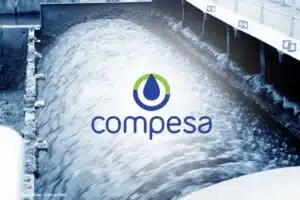Pagar por projetos de infra-estrutura pode ser um obstáculo real para cidades, agências e empresas.
Muitos municípios não são grandes o suficiente para se beneficiarem de economias de escala associadas a projetos de grande porte e podem não ser capazes de repartir os custos sobre uma grande população. Isso pode ser um desafio particular para vilas rurais ou isoladas.
Uma maneira de superar este obstáculo e responder rapidamente às necessidades relacionadas com a água é através de contratos de Build-Operate-Transfer (BOT).
Veja o artigo complete no link abaixo:
Fonte: Rich Kenny – VP na Fluence Corporation.
Paying for infrastructure projects can be a real hurdle for cities, agencies, and enterprises.
Many municipalities aren’t big enough to benefit from economies of scale associated with large projects, and may not be able to spread the cost over a large population. This can be a particular challenge for rural or isolated towns.
One way to overcome this obstacle and respond quickly to water-related needs is through Build-Operate-Transfer (BOT) contracts.
BOTs and other Public-Private Partnerships are an increasingly common solution. In fact, an analysis by Bluefield Research expects the market for water-related public-private partnership projects to almost triple between 2016 and 2020.
In a BOT contract, a private partner agrees to finance, design, build, and operate a facility. The private partner is entitled to its revenues, but agrees to transfer the facility back to the commissioning partner after a specified amount of time, usually 20 to 30 years.
There are several variations of BOTs, including Build-Own-Operate-Transfer, in which case the private partner actually owns the facility for the term of the contract, and Build-Lease-Transfer, in which case the private partner builds a facility and leases it to the public partner. Since these have the same goal — financing infrastructure projects — we use the umbrella term BOT for all of them.
Obstacles to BOT Financing
One 2007 survey found very few agencies in the United States were using BOTs. Among the reasons given by the respondents were:
- The availability of funding and proven alternatives
- Political barriers
- Resistance to change, both on the part of government agencies and private sponsors
In the U.S., residents are used to owning their infrastructure. But as water facilities and distribution networks age, citizens may not want to foot the bill to replace them.
Paying for them over time through utility rates may be more acceptable. When they’re shown successful projects, the rate-paying public will be able to see the government is getting the best value for new or improved water services.
BOTs are being used more and more around the world. But, the governments of some poor countries may not be in a position to provide sovereign guarantees.
Benefits of BOT Financing
Businesses that successfully develop a BOT water project can expect long-term, reliable income from them. End users can expect long-term, predictable costs.
Some of the benefits associated with BOT financing vary based on whether the organization is in the public or private sector.
Private Projects
Private clients, for instance brewers or fish packers, may enter into a BOT because they want to focus on their primary business and avoid management and labor distractions.
They can minimize investment and operational risks while leaving water or wastewater treatment in the hands of experienced professionals.
Public Projects
Governments or public utilities have a slightly different set of challenges, which BOTs can resolve. Their ability to borrow may be limited, or may depend on bond issues.
Their books are open and accountable to the public. Entering into a BOT can eliminate the risk associated with investing in and operating an infrastructure facility.
Infrastructure investments can also generate income for a region.
This may be in the form of a water supply for an arid agricultural region, or wastewater treatment to support tourism in a coastal region. Governments may want to use a BOT to balance predicted income and costs.
Governments typically set and enforce the technical and operational standards of an infrastructure project according to local and national regulations.
A private partner is responsible for compliance with regulations, as well as for construction and operation, and has experience specific to the project at hand.
Is a BOT Right for Your Project?
Sometimes politicians or officials from public utility companies will think of BOT as a magic bullet for financial and infrastructure problems, without considering the effort and commitment it takes from both sides to develop such a project.
Success may require significant change. In Mexico, for example, one of our projects required the modification and passage of laws in order to finance the project.
But the fact remains that BOTs can eliminate the need for public sector agencies to find funding, which can get in the way of responding quickly to water-related emergencies.
BOT financing is not ideal for all organizations, but is one of many available options.
By carefully examining your organization’s needs, resources, and risk profile, we can better determine whether this type of financing is appropriate for your intended project.













































